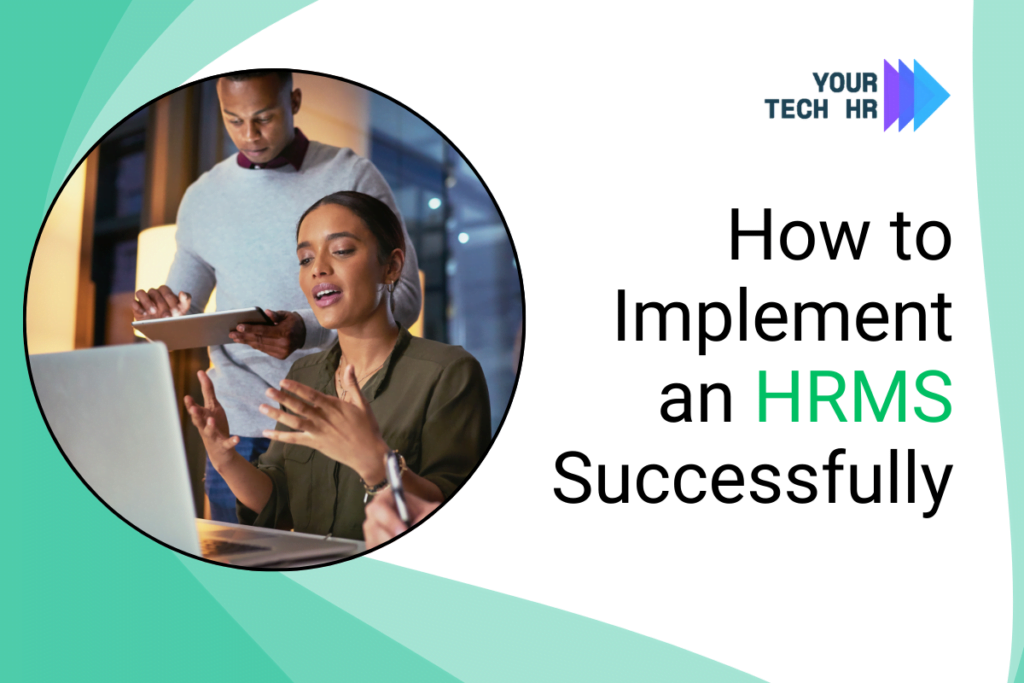What is an HRMS?
Before we dive into the nitty-gritty of implementation, let’s quickly clarify what an HRMS is. Think of it as a digital toolbox for HR. An HRMS helps manage various HR functions like recruitment, payroll, performance tracking, and employee records. By automating these processes, an HRMS can save time, reduce errors, and provide valuable insights into how your organization operates.
- Requirements Gathering: Laying the Groundwork
The first step in implementing an HRMS successfully is requirements gathering. This is where you figure out what you really need from the system. Here’s how to do it effectively:
Talk to Your Team
Start by chatting with key people in your organization. This includes HR staff, department heads, and even employees who will be using the system. Ask them about their experiences and what they wish could be better. You might be surprised by the insights you gather!
Identify Pain Points
What are the current challenges? Is data entry a nightmare? Is tracking employee performance cumbersome? Understanding these pain points will help you define what features your HRMS must have to make life easier for everyone.
List Essential Features
Once you’ve gathered feedback, create a list of must-have features for your HRMS. Common features to consider include:
Employee Self-Service Portal: This lets employees access their information and manage requests on their own.
Performance Management Tools: These facilitate goal setting, feedback, and performance evaluations.
Payroll Management: Automating payroll processing and tax calculations can save a ton of time.
Recruitment Module: Streamlines the hiring process from job postings to candidate tracking.
By clearly defining your requirements, you’ll be better equipped to choose the right HRMS vendor.
- Vendor Selection: Finding Your Perfect Match
Once you’ve gathered your requirements, it’s time for vendor selection. With so many HRMS providers out there, it’s crucial to find one that fits your organization’s needs. Here’s how to navigate this process:
Do Your Homework
Start by researching various HRMS vendors. Look for reviews, case studies, and testimonials from organizations similar to yours. Create a comparison chart to evaluate each vendor’s offerings, pricing, and support services.
Request Demos
Most vendors offer demos of their HRMS solutions. Take advantage of these opportunities to see the software in action. Pay attention to the user interface – is it intuitive and easy to navigate? This is especially important for ensuring that employees will adopt the system without frustration.
Check for Customization
Every organization has unique needs, so it’s vital to select a vendor that allows for customization. Ask potential vendors how their HRMS can be tailored to fit your specific requirements and workflows.
Evaluate Customer Support
Reliable customer support is crucial for a successful HRMS implementation. Inquire about the vendor’s support options, including training resources, help desk availability, and ongoing assistance after implementation.
- Data Migration: Getting Your Information in Order
Data migration is a critical step in the HRMS implementation process. This involves transferring existing employee data from your current systems to the new HRMS. Here’s how to ensure a smooth migration:
Clean Up Your Data
Before migrating, take the time to clean your data. Remove duplicates, outdated information, and any inaccuracies. This step is essential to ensure that your new HRMS is populated with reliable data from day one.
Map Your Data Fields
Next, you’ll need to map data fields from your old system to the new HRMS. This involves aligning the data structure of your existing system with that of the new software. Make sure that all necessary fields are accounted for to avoid data loss.
Test the Migration
Conduct a test migration to identify any issues before the final transfer. This trial run will help you troubleshoot any problems and ensure that the data appears correctly in the new system.
Execute the Final Migration
Once you’re confident in the test results, proceed with the final data migration. Monitor the process closely to address any issues that may arise.
- User Training: Empowering Your Team
After the HRMS is set up and data is migrated, user training is essential for successful adoption. Here’s how to train your team effectively:
Create a Training Plan
Develop a comprehensive training plan that outlines the training objectives, methods, and timeline. Consider different learning styles and preferences among your employees.
Hands-On Workshops
Organize hands-on workshops where employees can practice using the HRMS in a controlled environment. This practical experience will help them feel more comfortable with the new system.
Online Resources
Provide online resources such as video tutorials, user manuals, and FAQs for self-paced learning. This allows employees to revisit training materials as needed.
Ongoing Support
Establish a support system for users to address questions and challenges after the initial training. This could include a dedicated help desk or a user community where employees can share tips and solutions.
- Change Management: Navigating the Transition
Change management is a crucial element in the HRMS implementation process. Implementing a new system can be met with resistance, so it’s important to manage this change effectively. Here are some best practices:
Communicate Openly
Keep all stakeholders informed about the changes and benefits of the new HRMS. Transparency helps alleviate concerns and builds trust among employees.
Involve Employees
Encourage feedback and involve users in the implementation process. When employees feel included, they are more likely to embrace the new system.
Monitor Progress
Regularly assess the adoption of the HRMS and address any challenges that arise. Solicit feedback from users to identify areas for improvement and make necessary adjustments.
Conclusion: Your Path to HRMS Success
Successfully implementing an HRMS requires a structured approach that includes requirements gathering, vendor selection, data migration, user training, and change management. By following these steps, your organization can enhance its HR functions and achieve greater efficiency.
Remember, the key to a successful HRMS implementation lies in careful planning and active engagement with all stakeholders. Embrace the journey, and your HRMS will become a valuable asset to your organization.
Final Thoughts
Whether you’re a corporate professional looking to streamline HR processes or a tech-savvy teenager interested in HR technology, understanding how to implement an HRMS successfully is essential. By focusing on these critical elements, you can ensure that your HRMS implementation is not only successful but also sets the stage for improved HR technology adoption and integration in the future. So, roll up your sleeves and get ready to transform your HR processes for the better! With the right approach, your HRMS can make a real difference in how your organization operates, making life easier for everyone involved. Let’s get started on this exciting journey!


